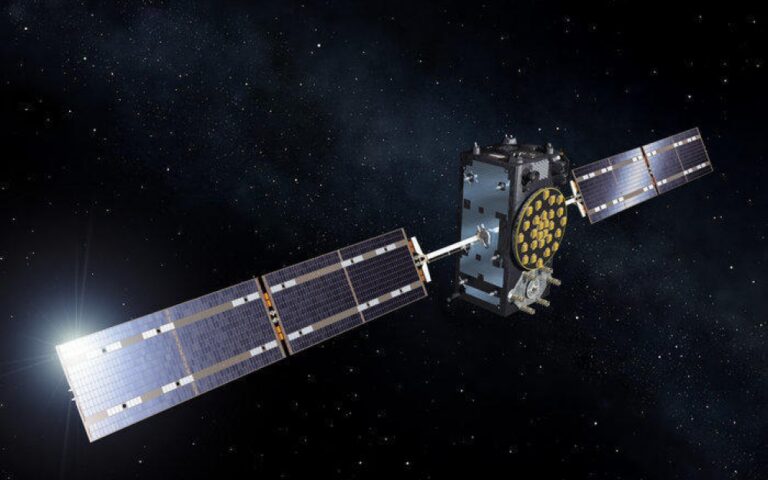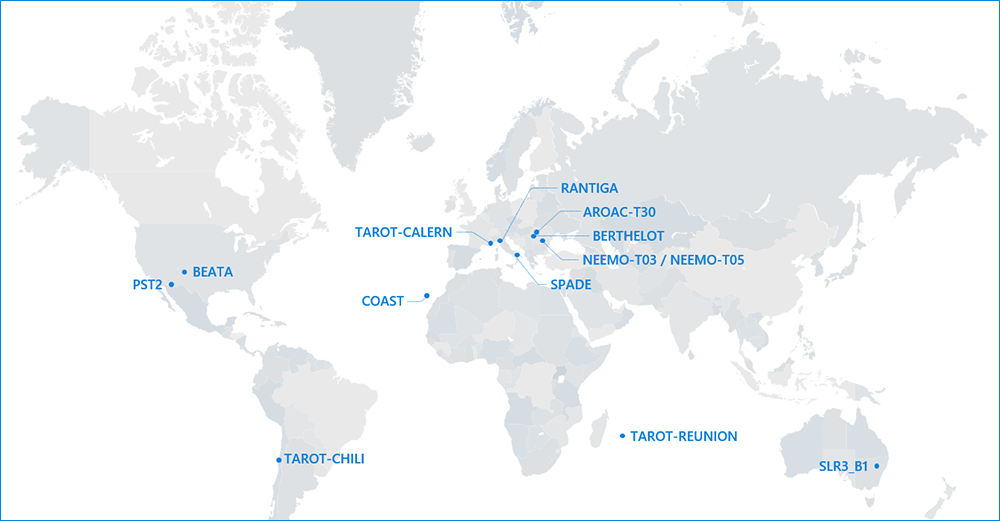
In a first for Europe’s global navigation satellite system, Galileo satellite GSAT0219 performed a collision avoidance manoeuvre on 6 March 2021 to mitigate a risky conjunction with a large piece of space debris. Following a collision risk alert from EU Space Surveillance and Tracking (EU SST), the Galileo Service Operator under the management of the European GNSS Agency (GSA) manoeuvred the spacecraft out of harm’s way. Satellite GSAT0219 returned to normal operations on 19 March 2021.
Space is becoming increasingly busy, but some orbital regions are more congested than others. The Medium Earth Orbit (MEO) regime, where most navigation satellites reside, including the European Galileo constellation, is one of the least congested ones, when compared to other orbits like the Geostationary Earth Orbit (GEO) or regimes like the Low Earth Orbit (LEO), particularly Sun-Synchronous Orbits. That is the reason why close approaches, and thus Collision Avoidance Manoeuvres (CAMs), happen less often in MEO.
However, navigation satellites and other assets in MEO are not safe from the risks posed by space debris. And given their key applications and services, essential for our daily lives, it is of utmost importance that they are protected. On 6 March 2021, Galileo operators faced their first ever CAM, due to a risky conjunction with a large piece of debris, an inert rocket body that had been in orbit since 1989. But they were not alone in their decision-making process: the EU Space Surveillance and Tracking programme (EU SST) was there to support them and provide advice at all stages of the event.
On 25 February, EU SST – through the Operations Centre (OC) in charge of the Galileo fleet (FR OC) – first detected a potentially risky event involving Galileo spacecraft GSAT0219 (2018-060C) and a launcher’s third stage, while routinely monitoring the 18th SPCS SP catalogue provided by the United States. The close approach was to take place nine days later, on 7 March. The OC consequently contacted the Galileo Service Operator on 26 February after further analysing available data from both EU SST contributing sensors and external sources.
EU SST continued providing support over the course of the week, while the network of EU SST contributing sensors had been tasked to observe the piece of debris to better determine its orbit. Thirteen sensors from four EU Member States contributed with autonomous measurements of the secondary object (the rocket body). As the probability of collision remained above the threshold levels defined by Galileo operators, this led on 5 March to the recommendation of performing a CAM.
With support from EU SST, Galileo operators designed and planned the manoeuvre, and the OC in charge screened the predicted orbits after manoeuvering to make sure the risk would reduce below the thresholds, and no additional conjunction or close approach would be created. After confirmation from the screening, the manoeuvre was performed on 6 March. The scaled probability of collision successfully dropped several orders of magnitude below the threshold to negligible levels.
During the whole process, the GSA and the European Commission were kept in the loop, with EU SST informing them, through the Galileo Service Operator, of the risks and the mitigation measures taken to avoid them.
This very first collision avoidance action for a spacecraft of the Galileo fleet will certainly not be the last: the number of close conjunctions is expected to grow given the increase in launches over the past and upcoming years, and the associated debris generated. MEO being the largest orbital regime, it is often crossed by third stages of launchers in elliptical paths which serve to place objects into MEO and GEO orbits. Those rocket bodies are then left in MEO orbits, potentially resulting in cases like this one.
This is a clear of example of the need for a reliable and comprehensive monitoring of the space environment, and at the same time showcases the high levels of expertise in Europe, within the EU SST and among spacecraft operators. As this event demonstrates, close and trusting cooperation between all relevant actors in Europe and beyond is paramount to the successful coordination of space traffic and to keeping our critical space infrastructure safe.


